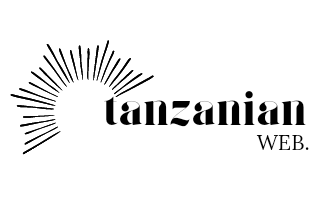INSPECTOR SADIKI AND OTHERS v GERALD NKYA 1997 TLR 290 (CA)
Court Court of Appeal of Tanzania - Dar es Salaam
Judge Ramadhani JA
B CIVIL APPLICATION 8 OF 1996
27 October 1997
Flynote
Civil Practice and Procedure - Appeals - Application for extension of time to serve
respondent with notice of C appeal - Application made after 40 days refused.
-Headnote
The applicants were the respondents in an action for malicious prosecution in the
High Court in which judgment was given against them. The applicants filed a notice
of appeal within 6 days of the D judgment having been granted but the respondent
was neither served with a copy of the notice of appeal nor the copy of the letter
requesting copies of the proceedings. It appeared that the applicants reacted only
some 40 days after they became aware of the omission.
Held:
E (i) The cause of the delay in the present case was the error of the
applicants. These circumstances did not constitute `sufficient reason' for the purposes
of Rule 8.
Case Information
Application dismissed.
F Cases referred to:
1. Transport Equipment Ltd v D P Valambhia [1993] TLR 91 (CA)
2. Daphne Parry v Murray Alexander Carson [1963] EA 546
G Songoro for the applicants.
[zJDz]Judgment
Ramadhani JA:
The respondent, Gerald Nkya, successfully sued the three applicants for malicious
prosecution in the High Court of Tanzania at Arusha. The judgment was delivered on
26 July 1996 and on 1 August 1996 the applicants filed a notice of appeal and wrote a
letter requesting copies of the proceedings. H The respondent was neither served
with a copy of the notice of appeal nor with a copy of the said letter. Hence, this
application to extend time within which to serve the respondent with both of those
copies.
I The applicants were represented by Mr Songoro, Learned Senior
1997 TLR p291
RAMADHANI JA
State Attorney. He reiterated the contents of the affidavits of Mr Mlambo, Learned
State Attorney A Arusha and Mariam Issa Pangani, the personal secretary to the
Principal State Attorney, Arusha. It has been explained by the applicants that the
notice of appeal and the letter requesting record of proceedings indicated that copies
to be served on the respondent. However, because the law B secretary had gone on
maternity leave, Mariam Pangani filled the vacancy, but as she was new to the job,
she sent the originals and all the copies to the High Court. No copy was sent to the
respondent, Mariam Pangani herself, said so in her affidavit. The Attorney-General's
Chambers, Arusha became aware of this omission on 3 October 1996 when the office
received a letter from C the respondent claiming the execution of the decree.
The respondent, on the other hand, in his counter-affidavit, said that on 19
September 1996, that is forty-nine days after the notice of appeal was filed, he
presented to the Attorney-General's Chambers, Arusha, copies of the proceedings,
judgment and decree of the case to alert them that D he was taking steps to execute
the award. On 30 September, he sent to the Treasury his claim for Shs 29,426,250/=
by registered mail with a copy to the applicants. He went on to say that there was
some further correspondence with the Treasury and that on 6 November 1996 he sent
the E details required by the Treasury copied to the Attorney-General's Chambers,
Dar es Salaam and Arusha. On 18 November the respondent went to the Attorney-
General's Chambers, Arusha for some other business when a copy of notice of motion
for this application was presented to him. He found out that the application had been
filed on 13 November. F
Mr Songoro maintained that it was on 3 October 1996 and not earlier, that the
Attorney-General's Chambers, Arusha became aware that the respondent had not
been served. What the learned Senior State Attorney was doing was refuting the
suggestion of the respondent that the G Attorney-General's Chambers, Arusha ought
to have been alerted as far back as 19 September when the respondent delivered to
them copies of the proceedings, judgment and decree. There are two matters here:
First, Mr Songoro, as a very senior legal officer, ought to have known better that H
the proper way to contradict the contents of the counter-affidavit of the respondent
was not by making statements from the bar but was by filing a reply to the counteraffidavit.
That the Attorney-General's Chambers has not done. Second, the affidavit
of Mr Mlambo filed in support of the application, states in para 13 that upon receipt
of the copy of the letter of the respondent claiming the decretal amount on 3 October
I
1997 TLR p292
RAMADHANI JA
A 1996, they realised that the respondent had not received a copy of the notice of
appeal. But it is curious that the receipt of the copy of that letter signalled to the
applicants only one thing; that was that the respondent had not received his copy of
the notice of appeal. Someone in the Chambers should have remembered that filing a
notice of appeal does not automatically stay execution. So, the respondent could have
received his copies but nevertheless, he could have decided to go B ahead with
execution. The applicants should have been prompted to another reaction; to file an
application for a stay of execution.
C But what is even more baffling, the reaction of the Attorney-General's Chambers,
Arusha came after the expiry of forty days from 3 October, when they realised the
omission, to 13 November, when they filed this application. Mr Songoro told me that
the Chambers, Arusha was trying to find out what had happened. However, the
learned Senior State Attorney failed to say whether it was D necessary to use forty
days to do just that.
In Transport Equipment Ltd v D P Valambhia (1), this Court refused to extend time
within which to serve the respondent with a copy of the notice of appeal. Admittedly,
the application in that E reference was made six months after the omission became
known. Here the application has been made after one month and ten days. But in that
case the applicant was very quick to serve a copy of the notice of appeal to the
respondent the day following the realisation of the omission. So, when F he filed
that application he had already made an attempt to serve the respondent. Despite that
we were not persuaded to extend time. In that reference, just as in this application,
the reason advanced for seeking the enlargement of time was the error of a law clerk
in the chambers of the G learned advocate for the applicant. We found that not to
constitute `sufficient reason' under Rule 8.
Just for purposes of completeness, in Daphne Parry v Murray Alexander Carson (2),
the applicant was late for only five days when he applied for extension of time, but
the Court of Appeal for East H Africa refused to do so and despite the fact that they
thought that the appeal had merit.
I cannot distinguish this application from the reference in Transport Equipment Ltd.
There is no sufficient reason advanced to persuade me to exercise the powers under
Rule 8. I dismiss the I application with costs. It is so ordered.
1997 TLR p293
A


%20(10).png)





0 Comments
PLACE YOUR COMMENT HERE
WARNING: DO NOT USE ABUSIVE LANGUAGE BECAUSE IT IS AGAINST THE LAW.
THE COMMENTS OF OUR READERS IS NOT OUR RESPONSIBILITY.